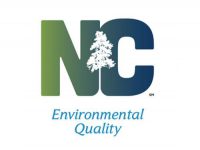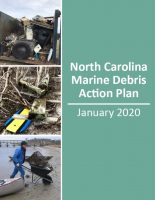 The Coastal Habitat Protection Plan Steering Committee’s next meeting will include a presentation on managing marine debris and measures Virginia growers are taking to increase their oyster population.
The Coastal Habitat Protection Plan Steering Committee’s next meeting will include a presentation on managing marine debris and measures Virginia growers are taking to increase their oyster population.
The committee’s webinar meeting is set for 9 a.m. May 11. The public can listen to the meeting online or by phone. A link to the webinar and information on system requirements and testing is available online.
Supporter Spotlight
In addition to the North Carolina Marine Debris Action Plan presentation, the agenda includes a review of 2021 Coastal Habitat Protection daft sections updates, and an update on an issue paper concerning Submerged Aquatic Vegetation Protection through Improved Water Quality.
Jimmy Johnson, coastal habitats coordinator with the Albemarle-Pamlico National Estuary Partnership, told Coastal Review Online that during the meeting that Toler Nolley, founder and CEO of Oyster Co. of Virginia, or OCVA, Holdings LLC will share with the group what some people in Virginia are doing to enhance their oyster populations, new technologies being used by Virginia oyster growers as well as some new finance mechanisms that may be available in the future.
Trish Murphey, watershed manager for the Albemarle-Pamlico National Estuary Partnership, will present the brief overview of where the issue paper currently stands on SAV and water quality.
“This topic is one of the major focus topics of this Coastal Habitat Protection Plan Steering Committee and Trish will check in with the steering committee to let us know how much progress she has made,” he said.
 The steering committee, which includes two commissioners from the Marine Fisheries, Coastal Management and Environmental Management commissions, reviews and approves the Coastal Habitat Protection Plan, recommendations and implementation actions, according to DEQ.
The steering committee, which includes two commissioners from the Marine Fisheries, Coastal Management and Environmental Management commissions, reviews and approves the Coastal Habitat Protection Plan, recommendations and implementation actions, according to DEQ.
Supporter Spotlight
The initial plan was completed in 2005 and is reviewed and updated, as necessary, on a five-year cycle.
The North Carolina Coastal Habitat Protection Plan, the result of state’s Fisheries Reform Act, passed by the General Assembly in 1997, addresses habitat and water quality efforts needed to protect, enhance and restore fish habitat in North Carolina. The initial plan that was completed in 2005 is reviewed and updated, as necessary, on a five-year cycle.
The steering committee also meets regularly to discuss habitat and water quality issues and solutions as well as receive updates on Coastal Habitat Protection Plan progress. Members of the steering committee serve as liaisons to their full commissions.
The Albermarle-Pamlico National Estuarine Partnership, Wildlife Resource Commission, Division of Energy, Mineral and Land Resources, Division of Mitigation Services, and Soil and Water Conservation Districts have participated in the Coastal Habitat Protection Plan process.







